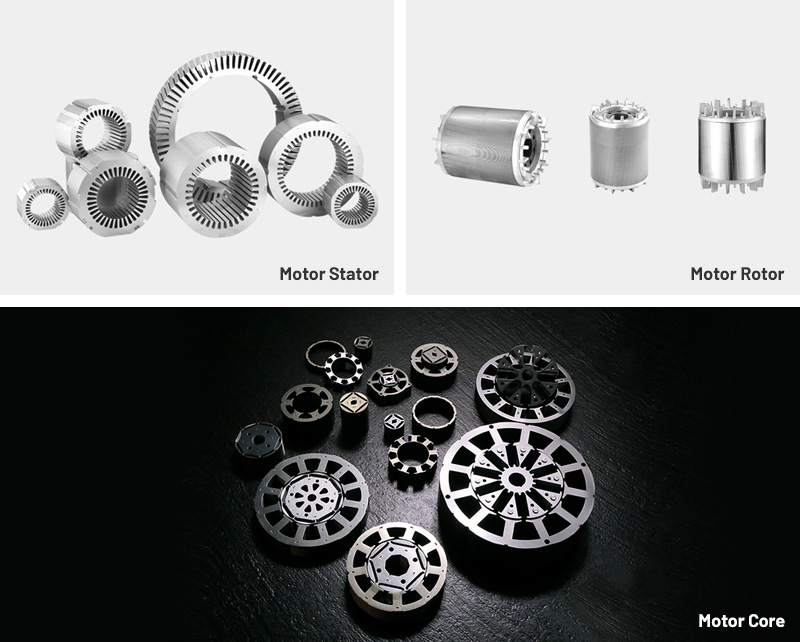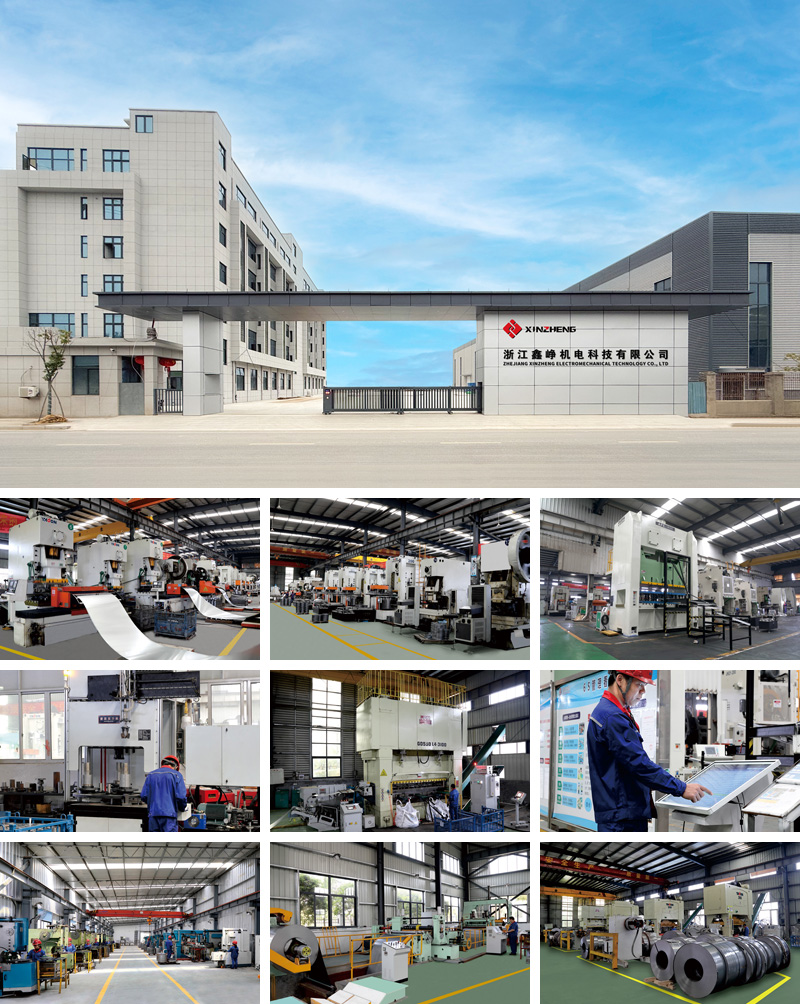The global shift toward energy-efficient industrial equipment continues to accelerate as governments implement stricter regulations on electric motor performance. IE3 efficiency standards—now mandatory in Europe, North America, and increasingly in Asia and the Middle East—require motors to operate with significantly reduced electrical and magnetic losses. As motors account for a large portion of industrial energy consumption, the efficiency class directly influences long-term operational costs, environmental impact, and equipment reliability.
Within this context, IE3 high-efficiency motor rotor laminations for the YE3 series have become an essential component in modern motor engineering. The rotor core determines torque generation, magnetic path performance, and balance at high operating speeds. As OEMs strive to meet or exceed IE3 energy-efficiency benchmarks, demand has grown for rotor laminations with precise dimensional accuracy, optimized material properties, and stable manufacturing quality. These laminations enable advanced rotor topologies—such as skewed slots or optimized cage structures—that help reduce losses and improve performance under demanding industrial conditions.
Rotor laminations form the magnetic backbone of an induction motor. When energized through the stator’s rotating magnetic field, the rotor receives induced currents that produce torque. For IE3-class motors, minimizing magnetic saturation and controlling flux leakage are essential. YE3 rotor laminations are engineered to maintain a uniform magnetic path, ensuring consistent torque output even at high loads.
Although the rotor experiences lower hysteresis and eddy-current losses than the stator, loss reduction remains crucial. Thin electrical steel laminations, high-grade insulation coatings, and precise stacking techniques reduce circulating currents within the rotor core. These improvements support lower heat rise, improved efficiency, and extended bearing life.
Rotor assemblies endure significant centrifugal force. Laminations for the YE3 series must maintain structural integrity under continuous high-speed rotation. Material strength, slot elongation resistance, and accurate punch profiles contribute to reduced vibration, better balance, and improved long-term mechanical reliability.
The lamination design must accommodate aluminum- or copper-cast rotor cages. Slot geometry, surface roughness, and tolerances influence casting fill quality, bonding strength, and electrical resistance. Proper design ensures minimal rotor bar defects and consistent electromagnetic behavior.
The IE3 high-efficiency motor rotor laminations of the YE3 series are typically manufactured using non-oriented cold-rolled electrical steel with controlled silicon content. Grades often range from M400 to M270, selected based on core-loss requirements and mechanical performance targets.
Key material properties include:
High magnetic permeability for efficient flux conduction
Low core loss to meet IE3 efficiency
Uniform grain structure for stable induction characteristics
Mechanical strength to withstand rotor acceleration forces
The choice of steel grade directly influences motor efficiency, torque behavior, and operating temperature.
Rotor laminations in the YE3 series incorporate engineering features designed for efficiency, durability, and manufacturing compatibility:
Precision-shaped rotor slots suitable for die-cast aluminum or copper bars
Optional skewed-slot configurations to reduce noise and torque ripple
High stacking factor improving the magnetic path for better induction
Optimized lamination profiles for balanced mechanical and electromagnetic performance
These features enable motors to meet IE3 efficiency requirements while maintaining robust operating characteristics.
Suppliers test incoming steel coils for core loss, thickness accuracy, tensile strength, and coating adhesion. Reliable material input is essential for IE3 performance consistency.
Stamping remains the dominant process for volume production. Dies must maintain minimal burr height and slot accuracy. Laser cutting is used for prototypes or lower-volume custom geometries.
Surface finishing prevents coating damage that could increase eddy-current loss. Edge quality also influences rotor balancing and mechanical strength.
Automated stacking ensures consistent core height and alignment. Interlocking tabs or bonding techniques help maintain alignment during rotor bar casting.
Aluminum or copper is cast into the rotor lamination slots under high temperature and pressure. Proper slot geometry ensures complete metal fill and minimal porosity.
Dynamic balancing, slot dimensional checks, and core-loss verification complete the manufacturing sequence. These checks contribute to vibration control and reliability in high-duty applications.
Rotor slot accuracy has a direct effect on torque output, current flow, motor noise, and casting quality. Even minor deviations can lead to performance drop or motor instability.
Insulation coating between laminations limits eddy currents. Weak adhesion or inconsistent thickness can undermine efficiency and increase thermal stress.
Variations in steel thickness or metallurgical composition affect flux behavior and mechanical strength. OEMs increasingly require batch-level traceability.
The final characteristics of the rotor depend heavily on casting soundness. Defects such as voids or incomplete fills degrade torque performance and raise operating temperatures.
Stack flatness and compression influence balance and mechanical strength. Misalignment can cause unacceptable vibration levels at high speeds.
High burr levels increase local heating and insulation damage. Premium YE3 laminations minimize burr height to enhance long-term reliability.
For manufacturers of IE3 motors, choosing a rotor lamination supplier involves evaluating both technical and operational capabilities.
Reliable suppliers offer steel certification, magnetic property documentation, and batch traceability. Consistent material quality is crucial for meeting IE3 standards.
In-house die design and precision machining capabilities ensure higher consistency and shorter development cycles for new rotor profiles.
Industrial motor manufacturers often require substantial quantities with narrow delivery windows. A stable supply chain is essential.
High-resolution optical inspection, burr measurement, and dimensional scanning indicate a mature quality-control system.
Engineering collaboration on slot shapes, skew angles, material selection, and stacking methods helps optimize motor performance.
ISO 9001, ISO 14001, and IATF 16949 certifications demonstrate a supplier’s commitment to process control and quality stability.
Differences in casting parameters can lead to incomplete fills or porosity, affecting rotor resistance and torque output.
Poor lamination alignment or slot deformation can cause rotor imbalance, raising noise and reducing bearing life.
IE3 motors run cooler, but rotor cores can still experience localized heating. Poor coating integrity or material inconsistency amplifies this issue.
Customers expect lower noise, higher torque density, and longer service life, pushing lamination design to new limits.
Material prices, particularly for electrical steel and copper, fluctuate. Balancing efficiency, cost, and manufacturability is a recurring challenge.
The YE3 series motor rotor laminations are used across a wide spectrum of industrial and commercial equipment:
Pumps and compressors for water systems, oil & gas, HVAC, and refrigeration
Industrial fans and blowers requiring stable high-speed performance
Gearmotors and conveyors in logistics, warehousing, and manufacturing automation
Machine tools where torque stability and speed control are essential
Agricultural and forestry machinery with long duty cycles and high mechanical loads
General-purpose motors used throughout industrial production lines
These applications benefit from improved torque output, reduced thermal losses, and long-term reliability supported by high-quality YE3 rotor laminations.
Stricter standards will push rotor lamination technology toward even lower losses and more advanced steel grades.
Thinner laminations and enhanced insulation coatings will support next-generation rotor designs.
Inline monitoring, burr-detection sensors, and real-time dimensional analytics will define future manufacturing practices.
Copper bar rotors deliver higher efficiency but require more precise lamination slot design and casting control. Demand is rising in premium motor markets.
Manufacturers are exploring new design geometries to reduce mass while maintaining torque performance and mechanical durability.
1. Why are rotor laminations important for IE3 efficiency?
They reduce magnetic losses, improve torque generation, and support stable high-speed performance.
2. What determines the quality of rotor laminations?
Steel grade, coating consistency, slot geometry, burr control, and casting compatibility are key contributors.
3. Do skewed rotor slots improve performance?
Yes. They reduce torque ripple, minimize noise, and enhance smooth motor operation.
4. How does casting quality influence rotor performance?
Incomplete casting or porosity raises resistance, reduces efficiency, and may cause overheating.
5. What industries most commonly use YE3 rotor laminations?
HVAC systems, water treatment pumps, compressors, fans, automation equipment, and industrial manufacturing.
Product Category

Comprehensive Strength


Copyright © Zhejiang Xinzheng Electromechanical Technology Co., Ltd. All Rights Reserved.
This website uses cookies to ensure you get the best experience on our website.